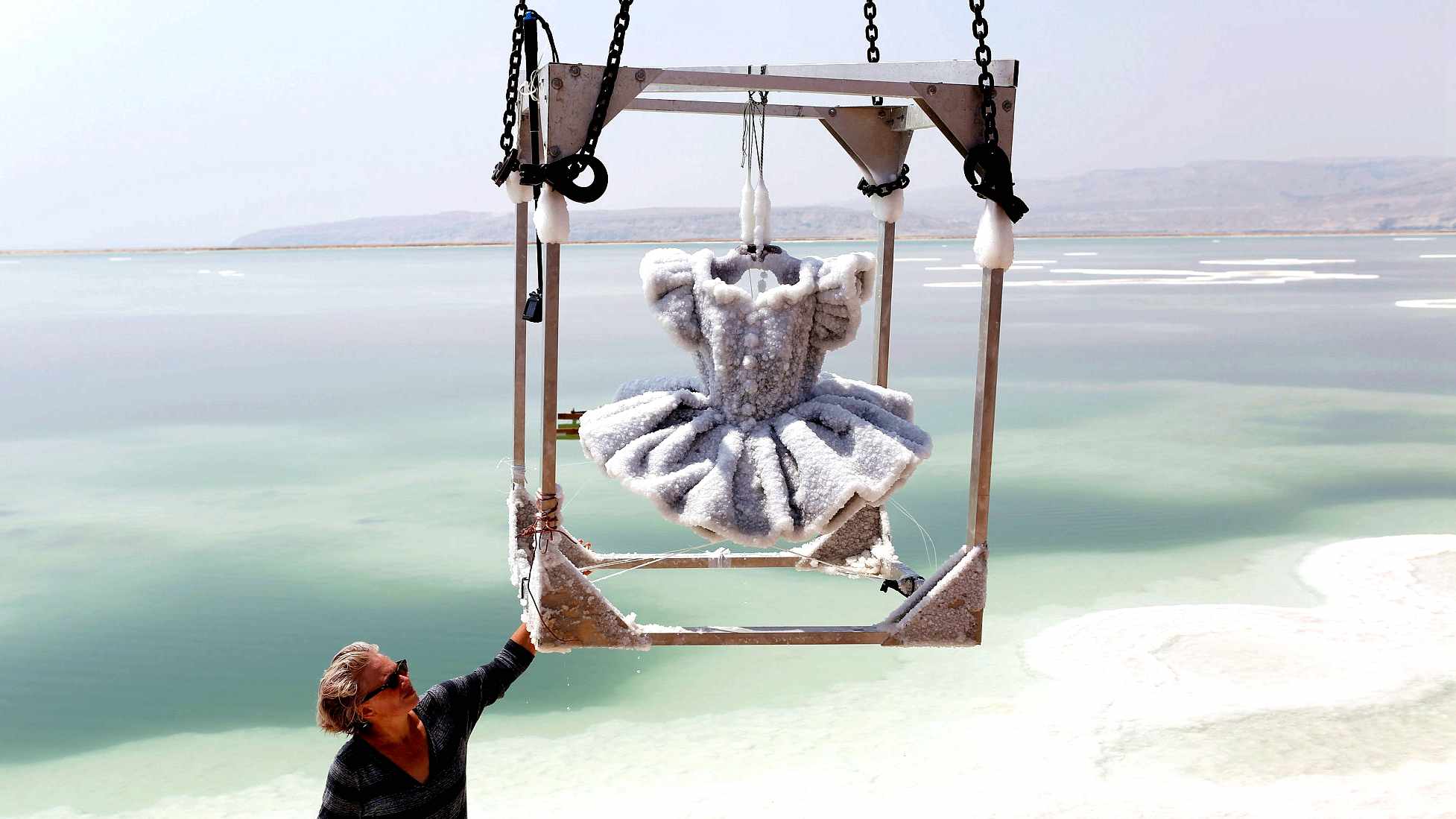
(Photo: CGTN)
A ballerina's tutu, submerged in the Dead Sea and "frozen" by accumulated layers of salt into a 200 kg (440 lb) crystal-like sculpture, will soon go on international display, part of a unique artistic project at the lowest point on the planet.
Israeli artist Sigalit Landau, 49, has used the high salinity that makes aquatic life in the Dead Sea impossible to create a collection of shiny white sculptures that seem to come out of a fairy tale.
They include a ballet dancer's costume and shoes as well as musical instruments.
Landau and her team secure their submerged objects with metal frames, weights, and strong cords. She said she selects them based "mainly (on) memories and materials which I'm attracted to, but also that the sea really likes."
The artist, who has visited the Dead Sea regularly since childhood, said she embarked on the project after noticing the crystal formations along its shores that "happen spontaneously."
Landau has been creating the sculptures for the past 15 years at the Dead Sea, a site that has been popular for millennia among health seekers and tourists who come to float in its mineral-rich waters.
Wearing straw hats and long sleeve tops to protect them from the sun and temperatures that can reach 46 degrees Celsius (115 degrees F), Landau and her team examine each item. Some, she said, crystallize quickly while others take more time, depending on the heat.
The Jerusalem-born artist and her team regularly document the process before and after the items are extracted, either by hand or by crane, and brought to a nearby hangar where a collection of sculptures is preserved.
Wearing straw hats and long sleeve tops to protect them from the sun and temperatures that can reach 46 degrees Celsius (115 degrees F), Landau and her team examine each item. Some, she said, crystallize quickly while others take more time, depending on the heat.
The Jerusalem-born artist and her team regularly document the process before and after the items are extracted, either by hand or by crane, and brought to a nearby hangar where a collection of sculptures is preserved.


